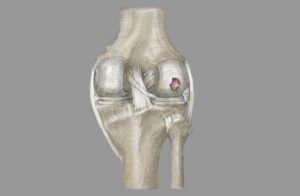Electronic Health Records (EHR) have revolutionized the healthcare industry, enabling medical professionals to store, manage, and access patient data more efficiently. However, to maximize the benefits of EHR systems, healthcare organizations must optimize their implementation and usage. This article explores various strategies of EHR optimization, focusing on enhancing workflow efficiency, data security, interoperability, and user satisfaction.
EHR Optimization Strategies
In today’s digital age, electronic health records (EHRs) have become an integral part of modern healthcare practices. These comprehensive systems have revolutionized the way patient information is managed and shared, offering numerous benefits for healthcare providers and patients alike. However, to fully harness the potential of EHRs and optimize their functionality, healthcare organizations must employ effective strategies. By implementing these EHR optimization strategies, healthcare providers can maximize the value of their EHR systems and create a more seamless and effective healthcare environment.
Assessing Workflow Requirements:
Understanding the specific workflow requirements within your healthcare organization is essential for optimizing your EHR system. Conduct a comprehensive analysis of your current processes to identify bottlenecks and areas of improvement. Collaborate with clinical and administrative staff to ensure that the EHR aligns with their needs and preferences, enabling seamless integration into daily operations.
Customizing EHR Templates and Documentation:
Customizing EHR templates and documentation to match the specific needs of your practice can significantly improve efficiency and accuracy. Tailor templates to reflect the common workflows and clinical practices of your healthcare providers, allowing for quicker and more intuitive documentation. Consider the inclusion of smart forms, pre-populated fields, and dropdown menus to facilitate data entry and reduce the risk of errors.
Training and Support for EHR Users:
Providing comprehensive training and ongoing support for EHR users is vital for successful optimization. Conduct regular training sessions to ensure that all healthcare professionals are proficient in using the system. Offer resources such as user manuals, online tutorials, and dedicated IT support to address user queries and troubleshoot issues promptly. Regularly seek feedback from users to identify areas for improvement and address any usability concerns.
We can use these strategies for EHR optimization.
Enhancing Data Interoperability:
Optimizing EHR systems involves ensuring seamless data exchange and interoperability between different healthcare entities. Implement health information exchange (HIE) standards and protocols that facilitate the secure and standardized transfer of patient information between systems. Promote the use of interoperable technologies, such as HL7 and FHIR, to enhance data sharing and collaboration across different healthcare settings.
Prioritizing Data Security and Privacy:
Maintaining the security and privacy of patient data is paramount when optimizing your EHR system. Implement robust cybersecurity measures, including encryption, firewalls, and access controls, to safeguard patient information from unauthorized access or breaches. Regularly update your EHR software and promptly patch any security vulnerabilities. Adhere to industry standards and regulations, such as HIPAA, to ensure compliance with data protection requirements.
Leveraging Data Analytics and Reporting:
Utilize the power of data analytics to optimize your EHR system’s capabilities. Implement tools that enable advanced data analysis, allowing you to extract valuable insights from patient records. Leverage analytics to identify trends, monitor patient outcomes, and streamline clinical decision-making. Generate comprehensive reports and dashboards that offer actionable information for quality improvement initiatives and population health management.
Also Read:
- Enhancing Medical Billing Efficiency
- How To Verify Patient Insurance
- Key Metrics To Consider During Practice Analysis
Continuous System Evaluation and Improvement:
Optimization is an ongoing process, requiring regular evaluation and improvement of your EHR system. Establish key performance indicators (KPIs) to measure the system’s effectiveness, such as user satisfaction, efficiency metrics, and error rates. Conduct periodic audits to identify areas for enhancement and monitor the system’s adherence to industry standards. Stay updated with new technological advancements and industry best practices to ensure your EHR system remains optimized.
Streamlining Data Entry and Documentation Processes:
Simplify and streamline data entry and documentation processes within your EHR system. Explore options for voice recognition or natural language processing to enable physicians to dictate notes and instructions directly into the system, reducing the time spent on manual data entry. Integrate with other devices and technologies, such as barcode scanners or RFID tags, to automate data capture and reduce the risk of errors.
Implementing Clinical Decision Support Systems (CDSS):
Integrate clinical decision support systems into your EHR to provide healthcare professionals with real-time guidance and alerts. CDSS can help prevent medication errors, identify potential drug interactions, offer evidence-based treatment recommendations, and provide relevant clinical guidelines. By leveraging CDSS, healthcare organizations can enhance patient safety, improve clinical outcomes, and standardize care practices.
You can use these all strategies for EHR optimization to elevate your practice revenu.
Optimizing EHR Data Storage and Retrieval:
Efficient data storage and retrieval are crucial for a well-optimized EHR system. Implement a robust infrastructure that supports the storage, backup, and retrieval of large volumes of patient data. Utilize technologies like cloud-based storage and advanced indexing systems to ensure quick and easy access to patient records, promoting efficiency during clinical encounters and reducing time spent searching for information.
Regular System Updates and Maintenance:
Regularly update your EHR system to ensure you have the latest features, bug fixes, and security patches. Stay connected with your EHR vendor to receive updates and schedule system maintenance. Additionally, establish a governance committee to oversee system updates, evaluate new functionalities, and ensure compatibility with other healthcare technologies.
Conclusion
By implementing these strategies, healthcare organizations can optimize their EHR systems to improve workflow efficiency, enhance data security and privacy, promote interoperability, and ultimately deliver high-quality, patient-centered care.









